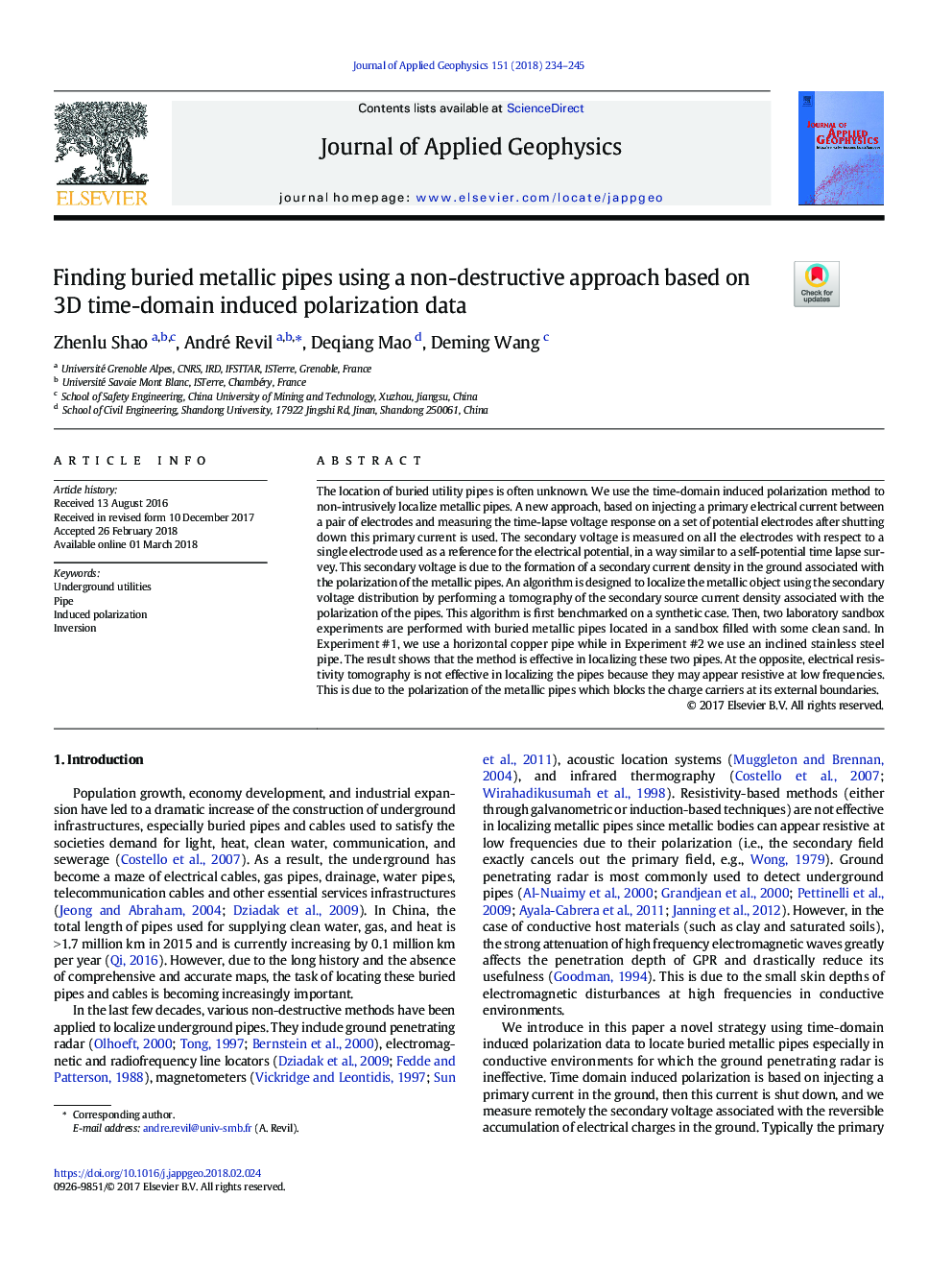| Article ID | Journal | Published Year | Pages | File Type |
|---|---|---|---|---|
| 8915456 | Journal of Applied Geophysics | 2018 | 12 Pages |
Abstract
The location of buried utility pipes is often unknown. We use the time-domain induced polarization method to non-intrusively localize metallic pipes. A new approach, based on injecting a primary electrical current between a pair of electrodes and measuring the time-lapse voltage response on a set of potential electrodes after shutting down this primary current is used. The secondary voltage is measured on all the electrodes with respect to a single electrode used as a reference for the electrical potential, in a way similar to a self-potential time lapse survey. This secondary voltage is due to the formation of a secondary current density in the ground associated with the polarization of the metallic pipes. An algorithm is designed to localize the metallic object using the secondary voltage distribution by performing a tomography of the secondary source current density associated with the polarization of the pipes. This algorithm is first benchmarked on a synthetic case. Then, two laboratory sandbox experiments are performed with buried metallic pipes located in a sandbox filled with some clean sand. In Experiment #1, we use a horizontal copper pipe while in Experiment #2 we use an inclined stainless steel pipe. The result shows that the method is effective in localizing these two pipes. At the opposite, electrical resistivity tomography is not effective in localizing the pipes because they may appear resistive at low frequencies. This is due to the polarization of the metallic pipes which blocks the charge carriers at its external boundaries.
Keywords
Related Topics
Physical Sciences and Engineering
Earth and Planetary Sciences
Geophysics
Authors
Zhenlu Shao, André Revil, Deqiang Mao, Deming Wang,
